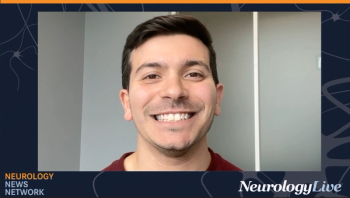
Diagnosis of Optic Neuritis
Robert C. Sergott, MD: Hello, and thank you for joining this NeurologyLive® Peers & Perspectives presentation titled “Management of Optic Neuritis.”
Optic neuritis is an inflammation of the optic nerve, usually seen in patients with multiple sclerosis [MS] at some point in their disease. Today we are going to discuss management, diagnosis, and especially differential diagnosis with this condition and treatment.
I am Robert Sergott, the chief of neuro-ophthalmology at Wills Eye Hospital in Philadelphia, Pennsylvania. Today I’m joined by Dr Rod Foroozan, a neuro-ophthalmologist at Baylor College of Medicine in Houston, Texas.
We’re going to start with an overview of optic neuritis. What is it—its pathophysiology, incidence, and prevalence? And what are the risk factors for this? I’m going to ask Rod to explain to us how he teaches residents about this and how he talks to patients about optic neuritis.
Rod Foroozan, MD: Generically, optic neuritis means inflammation of the optic nerve. That’s the way I’ll teach a patient or resident about it. Historically, when we as ophthalmologists talk about optic neuritis, what we’re usually referring to is that typical form that’s associated, as you pointed out, with multiple sclerosis, a demyelinating condition. There are other causes of optic nerve inflammation as well, so when we just say optic neuritis, we’re not really specifying. Could it be from some sort of infection? Could it be from other forms of sterile inflammation, some of which we’ll end up discussing? That’s what we mean when we talk about optic neuritis.
Robert C. Sergott, MD: We all know that for patients we see as neuro-ophthalmologists and most patients seen by neurologists, we’re rarely the first physician they’ve consulted with. After their visit initially with their primary care physician, an optometrist, or a comprehensive general ophthalmologist, before they get to us they stop at the internet. Rod, what are they likely to find on the internet about optic neuritis if they search for that?
Rod Foroozan, MD: Yeah, the first thing is they’re going to get very concerned about multiple sclerosis, far and away. The key here is identifying that you as the practitioner think this is optic nerve inflammation. That’s the first key point. So when they come in, you have to identify those findings that are indicative of an optic neuropathy first and then if you think this is optic nerve inflammation and not a sort of masquerade such as ischemic optic neuropathy.
Robert C. Sergott, MD: I want to reinforce what Rod said. He mentioned it’s going to be in the optic nerve. That’s why the patient can’t see, and it’s our job as neuro-ophthalmologists to make sure it’s not a retinal issue that can resemble optic neuritis, or it’s not something else as simple as extra astigmatism and they need glasses as they get older. There’s really a burden of proof here on us as neuro-ophthalmologists because, as Rod said, the fear of multiple sclerosis is well founded. When Rod and I trained, there was little treatment for this disease, but now we have 20 medications for it. It’s really moved us into a new era but still with some caution.
Depending on what study you look at, anywhere between 50% and maybe 75% of patients will have optic neuritis as their first sign of relapsing-remitting multiple sclerosis. As you know, there’s a form of multiple sclerosis called primary progressive disease, and optic neuritis is rare in that condition. We’re not exactly sure why that is. Rod, say a patient comes in now, and you localize it to the optic nerve. What are you going to do next?
Rod Foroozan, MD: Once I’ve decided it’s an optic neuropathy, again the key is determining clinically that it looks like inflammation. Unless they’re coming in already having tests such as an MRI [magnetic resonance imaging] and other evaluations, then I have to decide how I establish it’s an inflammatory optic neuropathy. One of the key things from the history is noting that there’s pain with eye movement, which is 90% or greater of the times present in a typical patient with optic neuritis. Then I need to do the rest of the eye exam to look in the eye and see if there’s involvement of the optic nerve, if there’s swelling, if there’s other evidence of inflammation in the eye. And then I’ll make my decisions based on testing, whether I think it’s inflammatory optic neuropathy or not.
Robert C. Sergott, MD: If you’re the first clinician to see this patient—say, the patient saw their family doctor and then you see them—are you going to always do an MRI?
Rod Foroozan, MD: Yes, and that’s going to be brain and orbits.
Robert C. Sergott, MD: Correct. This is something that’s changed. When MRI first came out, we didn’t understand its power for multiple sclerosis, but it made the invisible visible. We could then see disease that patients didn’t have symptoms for, and Rod very astutely mentioned he’s going to do the orbital MRI to look directly at the optic nerve for inflammation. That scan will also capture the optic chiasma because sometimes pituitary tumors or other tumors in that area can resemble optic neuritis, and he’s doing the brain MRI to see if there are other lesions there that really look like multiple sclerosis. Then I think that has very strong implications for what we do next.
Newsletter
Keep your finger on the pulse of neurology—subscribe to NeurologyLive for expert interviews, new data, and breakthrough treatment updates.



































